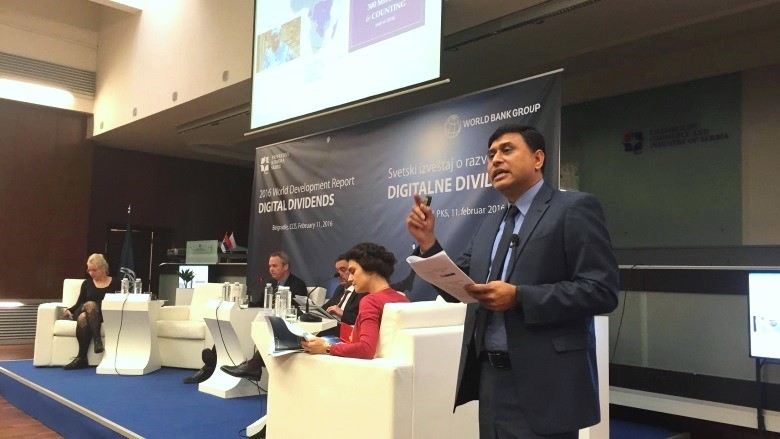Among the key messages in the report is that in order to deliver universal digital access, we must invest in infrastructure and pursue reforms that bring greater competition to telecommunications markets, promote public-private partnerships, and improve regulations.
But these more obvious measures will not be enough. The report finds that full benefits of new technologies will not be realized unless countries continue to improve the business environment, invest in people’s education and health, and promote good governance.
Countries that complement investments in new technologies with broader economic reforms will reap benefits in the form of faster growth, more jobs, and better services.
In other words, policies and programs that foster inclusion, efficiency and innovation are the most critical enablers for a successful digital economy.
Today, Serbia is in a good position to move forward and benefit from the opportunities digital technology presents. The existing e-government strategy and open data action plan within the context of administrative reform provide a good general backdrop.
In this context, some promising pilots have been launched in Serbia and could render real benefits to citizens and business. We will hear more later about the promising digital birth registration pilot, as well as about e-permitting related to construction permits, which is already showing its impact.
But this begs the question: why only birth registration and construction permits? Why not every single life event registration and permit? What prevents us from moving there?
Achieving broader implementation is first and foremost hindered by fragmentation in public sector management, an example of which is the lack of integration between information management systems on health, education, social protection and the general public service. This makes information flows ineffective and prevents government from capitalizing on the opportunities that integrated solutions to bring for better public service delivery. Countries at a level of development significantly lower than Serbia, for instance in South Asia, have started making important strides in this direction, so it is important for Serbia not to be left behind.
A further concern from our perspective is the impact of inefficiency and fragmentation on inclusion: as long as access to information and services is controlled by officials holding information monopolies, access will remain uneven, hurting the poor and disadvantaged in particular. For all these reasons, a government-wide effort to harmonize systems and make service delivery information publicly accessible and available is essential.
Serbia is also making steps in using modern technologies to bring innovation in economic development.
Through the activities of the Innovation Fund, Serbia has shown the potential for economic innovation. Several of the startups that it has generated have seen great international success. But the effort here again has not gone beyond piloting. In part this is again due to fragmentation of efforts, but even more so because here there are also many interests that would like to retain the status quo; for instance, in science and research financing and management. At the same time this status quo holds Serbia back from realizing its potential
In the WDR, Serbia can find examples from around the world for improvement of its own systems. In Kenya, for example, the cost of sending remittances dropped by up to 90 percent after the introduction of a digital payment system, known as M-Pesa. As a big remittances receiver, Serbia should look at this example as an incentive to improve its own payment system. In Pakistan and India, significant improvements in service delivery systems are being made through the development of new service delivery management and monitoring systems. Innovation systems in Estonia and Israel show that small countries can be great in pathbreaking reforms.
We do hope decision-makers will take note of these opportunities as they chart Serbia’s development strategy for the next four years. The World Bank Group, as always, stands ready to help Serbia pursue these priorities.
Thank you.




